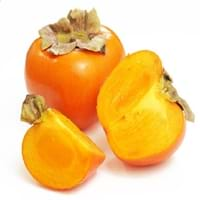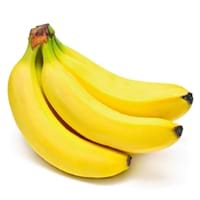Health Benefits
Anti-oxidant properties, Beneficial in curing fever, Cancer prevention, Heart care, Reduces nervous tension
Cancer prevention, Diarrhea treatment, Muscle pain relief, Piles treatment, Prevents constipation, Skin cleansing, Ulcer treatment
General Benefits
Anti-inflammatory properties, Boosts immune system, Controls blood pressure, Digestive aid, Eye care, Fights against infections, Helps in weight loss, Improves blood circulation
Controls blood pressure, Digestive aid, Maintains healthy cholesterol level, Strengthens bones
Skin Benefits
Anti-aging benefits, Brightens and lightens complexion, Reduces wrinkles
Anti-aging benefits, Hydrates skin, Skin rejuvenation
Hair Benefits
Good conditioner, Promotes longer and healthier hair, Treatment of dandruff
Prevents hair loss, Shiny hair, Softening mask
Allergy Symptoms
Abdominal pains, Anaphylaxis, Inflammation
Abdominal pains, Decrease in blood pressure, Dizziness, Hives, Itching of mouth, Lightheadedness, Swelling, Swelling of mouth, tongue or lips, Weak or racing pulse, Wheezing
Side Effects
Affects blood glucose levels, Decrease in blood sugar levels, Coagulation
Headache, Intense headache, Tooth decay
Best Time to Eat
Along with meal, As a snack in the late afternoon, Don't consume at night and before bed, Eat the fresh ones, avoid mixing with any other foods, don't eat after meal.
As a snack in the late afternoon, Don't consume at night and before bed, Eat the fresh ones, avoid mixing with any other foods, don't eat after meal.
Vitamin A (Retinol)
Not Available
Vitamin B1 (Thiamin)
Not Available
Vitamin B2 (Riboflavin)
Not Available
Vitamin B3 (Niacin)
Not Available
Vitamin B5 (Pantothenic Acid)
Not Available
Vitamin B6 (Pyridoxin)
Not Available
Vitamin B9 (Folic acid)
Not Available
Vitamin C (Ascorbic Acid)
Vitamin E (Tocopherole)
Not Available
Vitamin K (Phyllochinone)
Not Available
Lutein+Zeaxanthin
Not Available
Phytosterol
Not Available
Calories in Fresh Fruit with Peel
Calories in Fresh Fruit without Peel
Not Available
Calories in Frozen Form
Not Available
Calories in Canned Form
Not Available
Type
Berry, Tree fruit
Berry, Tropical
Season
Autumn, Winter
All seasons
Varieties
Early Golden, John Rick, Miller, Woolbright and Ennis
Cavendish Bananas, Lady Finger Bananas, Pisang Raja, Williams Bananas and Cooking Bananas
Color
Orange, Red, Yellow
Green, Yellow
Inside Color
Yellow
White
Shape
Round
Curving Cylinder
Origin
Eastern United States
Papua New Guinea
Soil Type
Sandy loam, Well-drained
Well-drained
Climatic Conditions
Can tolerate wide range of climates, Sunny
Warm
Facts about
- It is said that formation of seeds inside the persimmon fruit shows what type of winter is coming(type of snow).
- There are about 2000 varieties of this fruit.
- The American persimmon has another name 'Possumwood'.
- As bananas contain potassium-40 which is radioactive isotope of potassium, bananas are radioactive.
- Bananas float in water.
- There are around 1000 varieties of bananas.
- Eating this fruit will cheer you up.
Other Countries
Azerbaijan, Brazil, Costa Rica, Japan, Korea, Pakistan
Brazil, Cameroon, China, Colombia, Ecuador, Ghana, Indonesia, Philippines, Uganda
Top Importer
United States of America
Europe
Top Exporter
United States of America
Ecuador
Botanical Name
Diospyros virginiana
Musa acuminata and Musa balbisiana
Synonym
Not Available
Musa × dacca , Musa × sapidisiaca , Musa × sapientum
Subkingdom
Tracheobionta
Tracheobionta
Division
Magnoliophyta
Magnoliophyta
Class
Magnoliopsida
Liliopsida
Subclass
Dillenhidae
Liliidae
Order
Ericales
Zingiberales
Family
Ebenaceae
Musaceae
Species
D. virginiana
M. acuminata , M. balbisiana
Generic Group
Not Available
Banana
Difference Between American Persimmon and Banana
We might think that American Persimmon and Banana are similar with respect to nutritional value and health benefits. But the nutrient content of both fruits is different. American Persimmon and Banana Facts such as their taste, shape, color, and size are also distinct. The difference between American Persimmon and Banana is explained here.
The amount of calories in 100 gm of fresh American Persimmon and Banana with peel is 127.00 kcal and 95.29 kcal and the amount of calories without peel is Not Available and 89.00 kcal respectively. Thus, American Persimmon and Banana belong to and category.These fruits might or might not differ with respect to their scientific classification. The order of American Persimmon and Banana is Ericales and Zingiberales respectively. American Persimmon belongs to Ebenaceae family and Banana belongs to Musaceae family. American Persimmon belongs to Diospyros genus of D. virginiana species and Banana belongs to Musa genus of M. acuminata , M. balbisiana species. Beings plants, both fruits belong to Plantae Kingdom.









